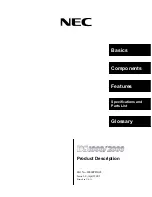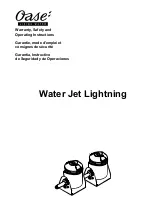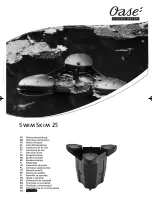
MERLIN LEGEND Communications System Release 5.0
Feature Reference
555-650-110
Issue 1
June 1997
Features
Page 447
Primary Rate Interface (PRI) and T1
Calling Party Number (CPN)
3
0
If you subscribe to the AT&T INFO2 Automatic Number Identification (ANI)
service or another PRI caller identification network service (Release 4.2 and
later), an incoming call on an ISDN line includes accompanying information about
the party placing the call. This can be either a station (extension) identification
number that is defined by the internal dial plan of the system where the call
originated (
Extension Only
), billing number information (
Line Telephone
Number
), or both (
Base Number with Ext.
). With this information, a call recipient
may identify the caller before answering.
Lines/Trunks
3
0
In this section on PRI and T1,
lines
are the representations that appear on
extension telephones or are put into pools. They represent the type of service
requested on a call.
Trunks
are the facilities that link switches. For all except DS1,
lines have a one-to-one correspondence to trunks because there are 24
transmission channels for each DS1 connection. With PRI, lines are further
removed from trunks because the type of service is not linked to the B-channel
(trunk). The system has an intermediary called a
B-channel group
(BCG). Lines
are used to place and receive calls, and a BCG links B-channels to lines.
B-channel groups may be either a single B-channel or multiple B-channels
grouped together.
shows how lines, B-channels, and B-channel groups, function together.
For outgoing calls, a user selects a PRI line that routes the call to a B-channel
group. The BCG selects an open B-channel and connects over the PRI
connection. For incoming calls, the network selects an open B-channel and the
BCG directs the call to the PRI line for which it has been intended: it matches the
Called Party Number with the line’s programmed telephone number. In addition,
the Dial-Plan Routing feature may be used to further direct the call to a specific
extension (SA button) or calling group by matching some portion of the Called
Party Number against the system dial plan. Dial-plan routing is similar to Direct
Inward Dial.
Each DS1 module is given 24 lines, whether or not it is used for emulation of
lines/trunks or for PRI.
PRI
3
0
PRI is a common configuration for a DS1 facility. A DS1 facility consists of
24 channels, sometimes referred to as DS0 channels, each with a capacity of
64 kbps.
DS1
refers to the twenty-four 64-kbps channels, plus framing and
signaling bits, multiplexed together to form a 1.544-Mbps
Digital Signal Level 1
signal. When used for PRI, a channel can be designated as either a B-channel
(
bearer channel
) or a D-channel (
data
or
delta channel
).
A B-channel is used to carry user information, such as the voice or data content of
a call, between the system and the far-end switch. Each B-channel provides
access to one or more network services. Releases 1.0 and 1.1 support access to
only one network service for each B-channel. Release 2.0 and later supports
















































